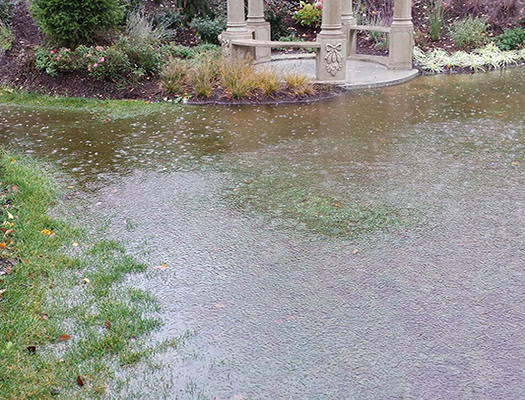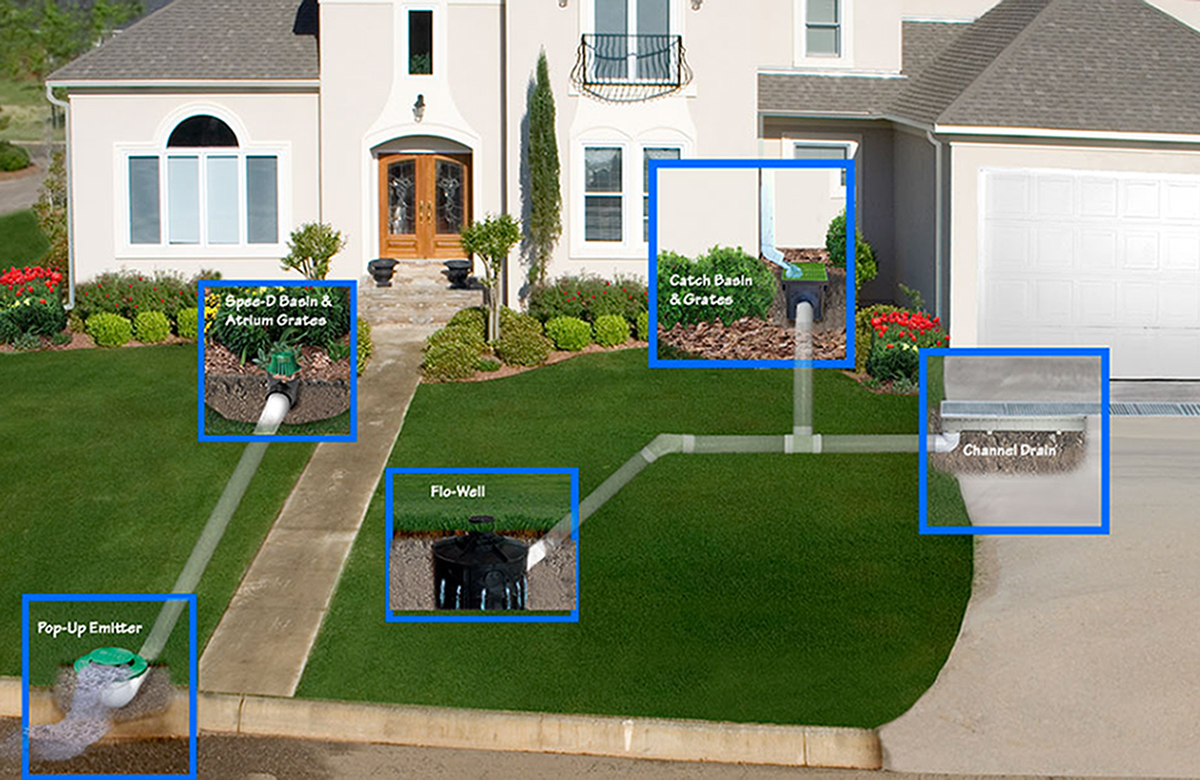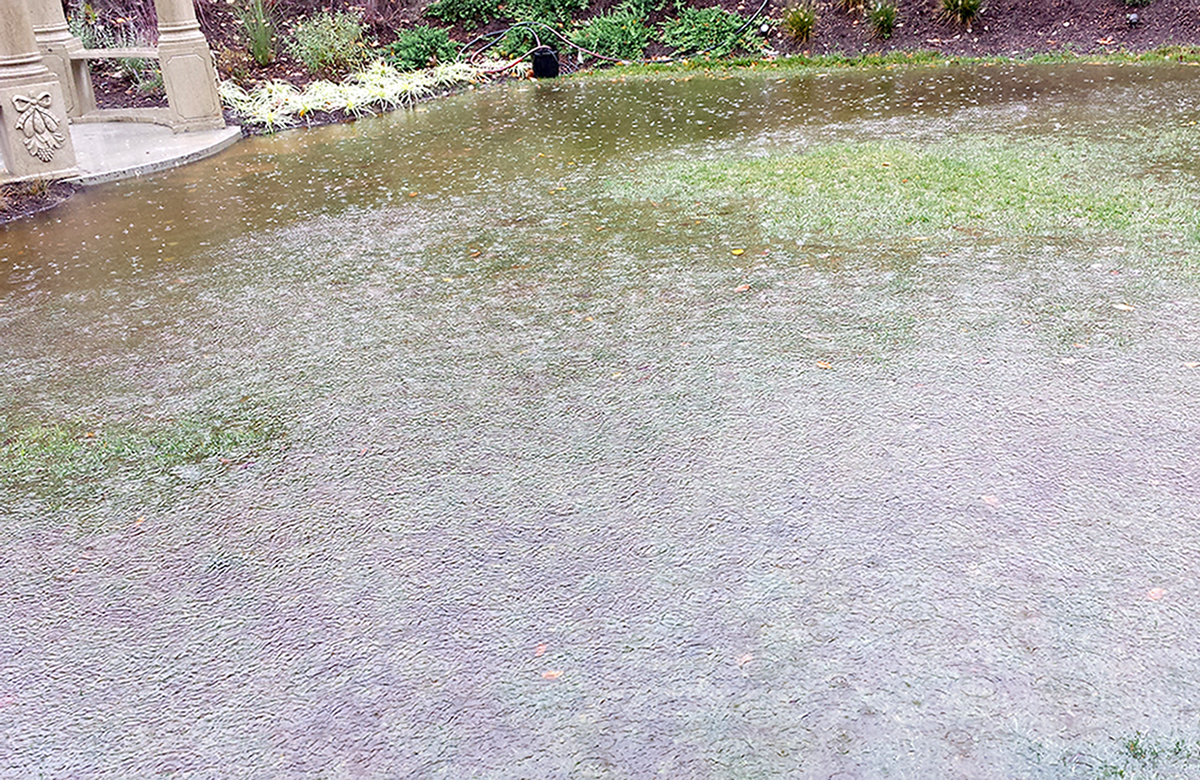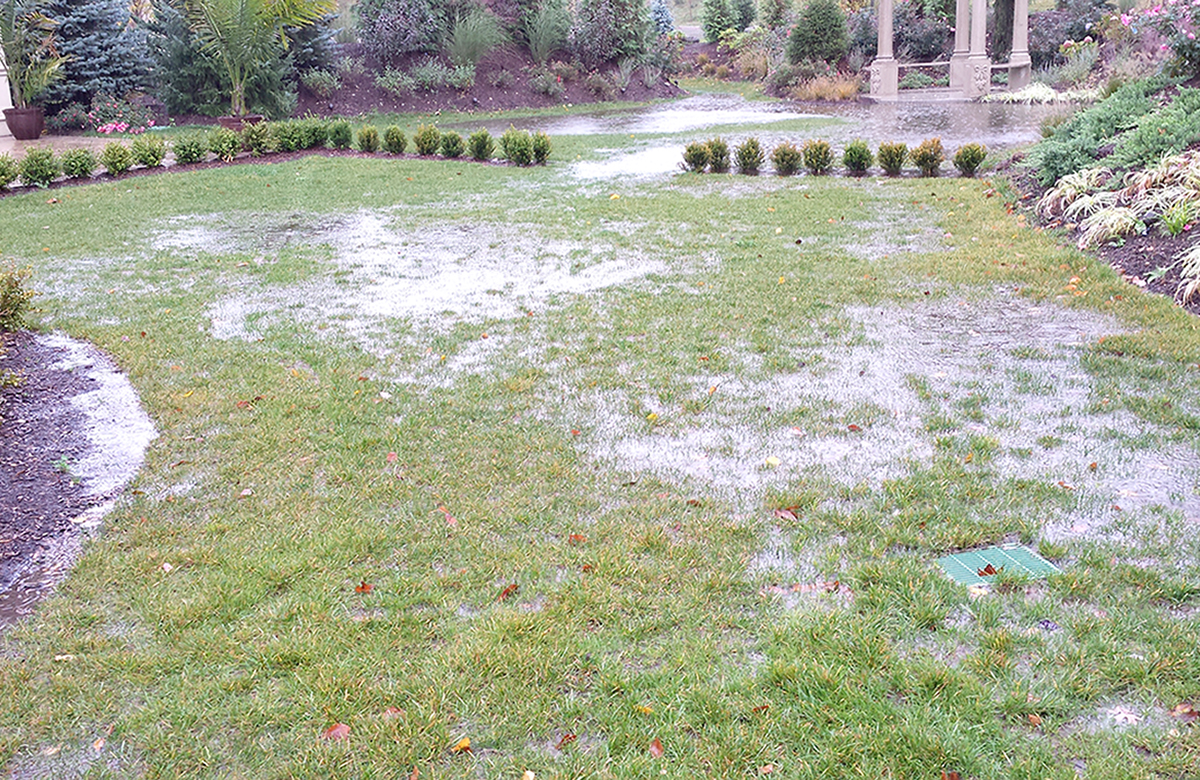Downspout Water Drainage Problems
Believe it or not, those rain gutters you try so hard to maintain may be contributing to a serious drainage problem. Rain gutters collect water falling over the entire surface area of your roof, channel it through downspouts and deposit it at concentrated areas close to your home. This rainwater then soaks into the ground and can collect near the base of your home– that is against basement walls, crawl spaces, or in the soil beneath your home’s foundation.
Basement / Crawl Space Drainage Problems
Damp, musty smells and wet walls are signs that water is getting into your basement or crawl space. Rainwater runoff from your roof or landscape soaks into the ground and often collects near your home – that is against basement walls, crawl spaces, or in the soil beneath your home’s foundation.
This can lead to basement and crawl space flooding, mold and mildew growth, or worse, your foundation settling and cracking.The best way to solve this problem is to collect and pipe the water away from your home before it causes serious damage.
Driveway Water Drainage Problems
Driveway: Many homes have driveways that slope towards the garage. During rainstorms, water can flow onto your property from several sources including roofs, hillsides, and your neighbor’s yard. Since concrete is impermeable, when water reaches your driveway it is no longer absorbed into the ground and often flows into your garage, or worse, your home.
If your driveway slopes towards your home, rainwater may not be the only source of water causing damage. Water from sprinklers or a hose will also contribute to this problem.
Patio / Walkway Water Drainage Problems
Patio/Pool Deck: Typically, patios and pool decks are made out of concrete or some other impermeable material. Water will puddle on these surfaces unless the patio or pool deck is properly graded or a drain is installed to capture and move this water away.
Standing water on patios and pool decks can cause moss and mildew growth, concrete staining, and dangerous slip hazards. If your patio or pool deck slopes towards your property, runoff water can puddle near your foundation and eventually work its way into your home, causing damage to floors and exterior and interior walls.
Walkway: Typically, walkways and sidewalks are made from concrete or other impermeable materials and are installed at a lower grade than the adjacent planters or grass. This causes water to collect and puddle on the walkways.Walkways that are flooded with water become impassable and make getting to the front door difficult without getting wet. Eventually this water dries out, often leaving behind an unattractive muddy mess.
Standing water on the walkway can also causes moss or mildew growth, concrete staining, and slip hazards – especially in colder climates where this standing water can freeze.
Neighbor Storm Water Runoff Problems
Water flows from higher to lower ground, so drainage problems are likely if your property is lower than neighboring properties. In general, your neighbors are not responsible for water runoff onto your property unless alterations to their landscape have changed the natural flow of water.
Water runoff from your neighbor’s property can spread throughout your yard, pool in low spots, or even collect near the base of your home. This water can create unsightly muddy areas and damage the exterior of your home and/or your home’s foundation, which can lead to water entering your basement or crawl space.
S5 Sustainable Stormwater Solutions
The NDS S5 system provides design flexibility for managing storm water onsite as close to its source as possible through run-off reduction and quality enhancement at the site scale.
Ideal for working with the contours and features of a site, S5 components easily adapt to fit a wide range of projects and install with the use of equipment. A single source solution, S5 is also qualifies for LEED credits and offers up to 250% more detention volume than traditional gravel systems.
Planter Area Water Drainage Problems
Rainwater and sprinkler spray can cause water to collect and puddle in planter areas next to your home, creating unattractive muddy areas and potentially leading to damage to your home’s foundation.
Standing water in planter areas soaks into the ground and often collects near your home – that is against basement walls, crawl spaces, or in the soil beneath your home’s foundation. In addition to causing damage to your home, wet planter areas can attract termites and cause plants to die.
Alternative Storm Water Solutions
TJB-INC uses rain gardens, permeable surfaces, retention &detention ponds, green roofs, & RainXchange Systems to return excess storm water back to groundwater and relieving the demand upon municipal storm water systems. Bioretention cells, also known as rain gardens, can be incorporated throughout your site to provide surface filtration of storm water runoff. By adding storage underneath the bioretention system, you can shrink the footprint on the surface while maximizing annual filtration and runoff reduction. This design practice can make bioinfiltration feasible for sites with marginal soils. Click For more information on permeable surfaces
Contact Us
Service Areas Include
- Weekly Services:
- Hamden & Surrounding Towns
- Monthly Services:
- 15 to 20 Miles from our shop
- Snow Removal:
- Hamden & Surrounding Towns
- Consultations & Construction:
- State-Wide and Beyond
- Call
- 800.926.2119
- 203.287.0636




